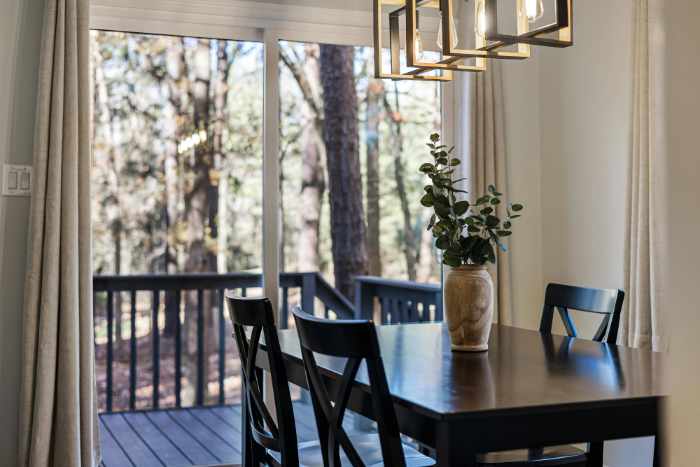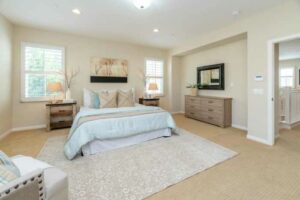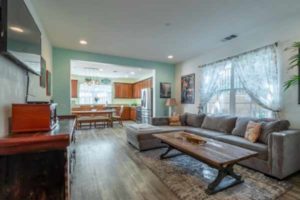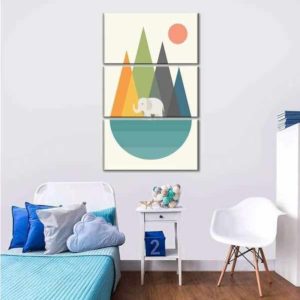Today, homeowners are increasingly investing in renovations to make their living spaces more comfortable and visually appealing. However, finding the perfect balance between these two aspects can be a challenging task. In this piece, we’ll look at the five core concepts that make up the art of blending functionality and style.

The Art of Blending Functionality and Style in Home Renovations
The art of blending functionality and style lies in thoughtful planning and execution. It’s about making choices that enhance the usability of a space without compromising its visual appeal. Whether you’re remodeling a kitchen, updating a bathroom, or reconfiguring your living room, the key is to integrate practical features that align with your design vision. This approach not only ensures that your home looks great but also makes it a more enjoyable place to live.
1. Maximize Space Efficiency Without Sacrificing Style
One of the biggest challenges in home renovation is making the most of the available space, especially in smaller homes or apartments. However, maximizing space efficiency doesn’t mean you have to compromise on style. With careful planning, you can create a space that is both functional and aesthetically pleasing.
Consider using built-in storage solutions to keep your home organized and clutter-free. For example, custom cabinets or shelves can provide ample storage without taking up too much floor space. Additionally, multipurpose furniture, such as a sofa bed or a dining table with built-in storage, can help you make the most of every square foot. By integrating these space-saving solutions into your design, you can create a home that feels spacious and stylish, regardless of its size.
2. Focus on Kitchen and Bathroom Upgrades for Maximum Impact
Kitchens and bathrooms are often the most used spaces in a home, making them prime candidates for renovation. These areas not only need to be highly functional but also stylish, as they play a significant role in the overall appeal and value of your home.
For bathrooms, consider hiring custom bathroom remodeling service providers to get the job done right. These professionals can tailor the renovation to your specific needs and preferences, ensuring that the final result is both functional and stylish. Whether you’re looking to install a luxurious walk-in shower, add a double vanity, or simply update the tiles, a custom approach can help you achieve a bathroom that meets all your requirements.
In the kitchen, functionality is key. Consider the layout and workflow—ensure that the placement of the stove, sink, and refrigerator (often referred to as the kitchen triangle) allows for efficient movement while cooking.
When it comes to style, materials like quartz or granite countertops, stainless steel appliances, and custom cabinetry can add both durability and a modern look. The same principles apply to bathroom renovations. Here, functionality is all about maximizing storage, ensuring proper ventilation, and choosing fixtures that are both practical and aesthetically pleasing.
3. Choose Materials that Offer Both Durability and Aesthetical Appeal
When renovating your home, the materials you choose play a critical role in achieving the right balance between functionality and style. Durable materials are essential for areas that experience high traffic or wear and tear, such as kitchen countertops, flooring, and bathroom surfaces. However, durability doesn’t have to come at the expense of aesthetics.
For instance, quartz countertops are not only highly durable but also come in a variety of colors and patterns that can enhance the look of your kitchen. Similarly, hardwood floors are known for their longevity and classic beauty, making them a popular choice for both traditional and contemporary homes. By selecting materials that offer both strength and visual appeal, you can ensure that your renovation stands the test of time while also looking great.
4. Consider the Flow of Space for Better Living
The flow of space in your home is crucial for both functionality and style. A well-thought-out layout ensures that your home feels open, airy, and easy to navigate, while also enhancing the overall aesthetic. When planning your renovation, consider how people move through your space and how each room connects to the next.
For instance, open-concept layouts are popular because they allow for a seamless flow between the kitchen, dining, and living areas, making the space feel larger and more inviting. However, even in more traditional homes, paying attention to the flow can make a significant difference. Removing unnecessary walls or creating wider doorways can improve the flow and make your home more functional.
Additionally, consider the placement of furniture and decor concerning the flow of the room. Avoid placing large pieces of furniture in high-traffic areas, as this can disrupt the flow and make the space feel cramped. By carefully planning the flow of your space, you can create a home that is both practical and visually pleasing.
5. Don’t Overlook Outdoor Spaces in Your Renovation Plans
Outdoor spaces are an extension of your home and should be given as much attention as indoor areas during renovations. Whether you have a small patio or a large backyard, these spaces offer opportunities to blend functionality and style. Start by considering how you want to use your outdoor area. Do you need a space for entertaining, gardening, or relaxation? Once you’ve identified the primary use, you can begin to plan the design.
For functionality, ensure that there’s adequate seating, shade, and lighting. Furniture should be durable and weather-resistant, but that doesn’t mean it has to sacrifice style. Modern outdoor furniture comes in a variety of materials and designs that can complement the look of your home. Additionally, consider features like fire pits, outdoor kitchens, or even water features, which can add both practical value and aesthetic appeal to your outdoor space.
Conclusion
Everyone is on board with elevating property appeal with design. But you need careful planning and thoughtful execution in order to enhance functionality at the same time.
By focusing on key areas like kitchen and bathroom upgrades, considering the flow of space, integrating modern technology, and paying attention to lighting and outdoor spaces, you can delve into the art of blending functionality and style. Personalization is the final touch that makes your renovation truly unique, ensuring that your home is not only a reflection of your taste but also a space that meets your everyday needs. As you embark on your renovation journey, remember that the goal is to create a living environment that enhances both your lifestyle and your enjoyment of your home.



